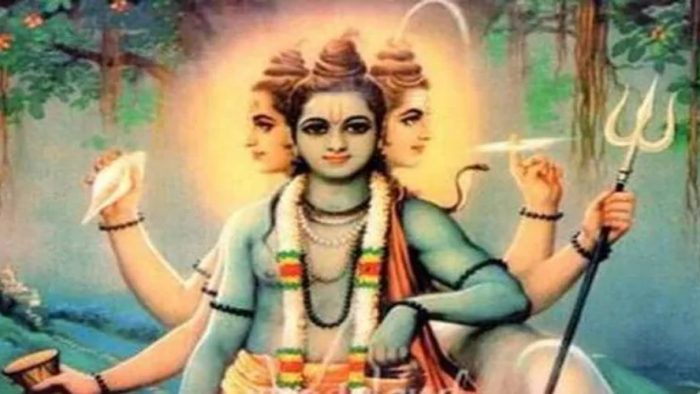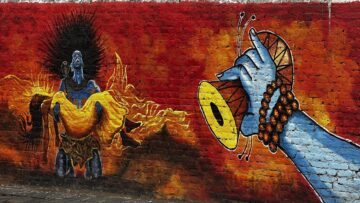The COVID -19 pandemic has created a solemn ambiance in the present times and the repercussion will reverberate in the post COVID-19 epoch. Social distancing and lockdown has created a rupture in keeping humankind socially glued. Much will perhaps alter in the way we live and strive in the times ahead. A pause in formal education imparted in schools and colleges is now a matter of concern. Education has moved out of classrooms and has now hooked to laptop and Smartphone screens. The present catastrophe presents the prospect to explore beyond the four walls of the classroom, learn from the surroundings, nurture empathy and increase resilience while staying safe.
Busy schedules, fast lifestyle, comfortable living spaces and the urge to take home an existence over living, has made learning a burden than an enriching life process. The race to join schools that have caregivers as teachers and a huge infrastructure to feed self pride is the new calling. In India, education is tailored according to pocket power in the urban landscapes but in the rural landscape education is a bait that is plated with food. The urbanites have choices to choose and spend on education while the rural population have to make do with whatever is given be it by the Government or by Non Governmental Organizations’ (NGO). In both the urban and rural scenario the unifying factors are the learners, teachers and the surroundings in which education is imparted.
When we talk of surroundings, it is not the infrastructure but the dwelling habitat, the flora, the fauna and other aspects of nature. Nature is abundant, silent and is a teacher that is constant and impartial. Education through nature is profound, complete and in-depth having a lifelong impact. There are some mute teachers in our close proximity that are available and dedicated in the process of transmitting treasured awareness. These teachers remain under- explored.
Here mentioning the teachers of Dattatreya, the wandering sage, who lived in forests pertinently conveys about learning beyond the classroom is important. As mentioned in Hindu mythology Dattatreya or Avadhuta is considered as an incarnation of the Holy Trimurty – Brahma, Vishnu and Shiva. The holy Trinity together, reincarnated themselves as a son to Rishi Atri and his wife Anasuya. Dattatreya is also considered a Vishnu avatar. Avadhuta dwelled in close proximity with flora and fauna and learnt his lessons from nature around him. As per legend Dattatreya had twenty four Gurus in nature from whom he learnt his lessons.
Shri Krishna narrates the story of Dattarey or Avadhuta to his good friend Uddhava in chapter seven of the Shrimad Bhagvat. The conversation between Shri Krishna and Avadhuta is popular as Uddhava Geeta. Once Yadu Raj met the wandering sage Avadhuta in the forest smeared in mud and in tatters. Seeing him Yadu made a query about his contented life in the forest and about his Gurus. To this query, Avadhuta gave a description of all his Gurus and replied –
“प्र्थिवि वयुर अकसम्,अपो ग्निस चन्द्रम रविह्
कपोतो जगरह सिन्धु ह्पतङो मधुक्र्द गजह्
मधु-ह हरिनो मिनह्पि ङल कुररो र्भकह्
कुमरि सर-क्र्त सर्प उर्ननभिह सुपेसक्र्त्
एते मे गुरवो रजन चतुर्-विम्सतिर अस्रितह्
सिक्स व्र्त्तिभिर एतेसम अन्वसिक्सम इहत्मनह “
“Prthivi vayur akasam apo gnis candrama ravih
kapoto ’ jagarah sindhuh patango madhukrd gajah
madhu-ha harino minah pingala kuraro rbhakah
kumari sara-krt sarpa urnanabhih supesakrt
ete me guravo rajan catur-vimsatir asritah
siksa vrttibhir etesam anvasiksam ihatmanah”
(Srimad Bhagavatam: Chapter 7: Slokas 33~35)
Avadhuta made a disclosure of his teachers in nature and explained-
The Earth, air, sky, water, fire, moon, sun, pigeon and python; the sea, moth, honeybee, elephant and honey thief; the deer, the fish, the prostitute Pingala, the Kurara bird and the child; and the young girl, arrow maker, serpent, spider and wasp. My dear King, by studying their actions I have educated myself on the knowledge of thyself.
In the present times we have wisdom in capsules. Education is segmented in books as subjects and is annually distributed according to grades/ class annually. The learning happens until the exams are taken and thereafter the students’ wipe it off their memory and move up the academic ladder. The learning is listed as a list of credentials achieved that reflect in numbers or grades in the achievement card. Hence, learning today is a numerical or an alphabetic accomplishment. Years are added to education and years of education are added to learners; certificates are gathered for showcasing and the sequence continues. Such learning does create a career assuring a livelihood but it is fairly far from styling a sensitive, responsible, humble and honest human.
The need of the hour is to move beyond the walls of the classrooms and connect with nature and our immediate surroundings. Here we discuss some universal elements of nature that we come across habitually on a daily basis. There are many such elements that we come across everyday. These natural elements are beyond geographical borders and religious demarcations but are teachers to be cherished.
The first teacher of the day is the Sun. The Sun is a silent observer and giver. The warmth of the sun is impartial and equal for the entire creation. The Sun has the power to warm up but at the same time the reason to cause rain and nourish the earth. It is a representation of balance in life. The sun heads the climate cycle and the season sequence. The sun also establishes the beginning and end of a process. It confirms the entry of darkness post illumination. It establishes the truth that nothing is everlasting.
The night begins with the setting of the sun and with the moon showing up in the gloom of the sky accompanied with the gamut of stars. The moon fades out in phases and again inches back in phases towards its circular shape. The lesson put forward by the moon confirms the change as an inevitable aspect of life. The opaque moon carries a calm translucent hue, not enough to illuminate the surroundings brilliantly but still enough to do its bit with grace. It confirms that everyone however little it may be has a role to play in the existence of life. The phases of the moon represent life that changes every moment ringing in happiness and ringing out sorrow or vice-versa. Each phase in life comes with lessons about good and bad. The stars depict the never dying spirit of unity. Each star twinkles with its glitter and decorates the black of the night sky with its diamond like splendor, the message is to have a goal and keep on doing the task .
The tree is a wonderful teacher. It selflessly cleanses the atmosphere as it takes in the carbon dioxide and emits oxygen- the life element. It silently shades the passerby from the blazing sun, produces flowers and fruits, feeds bees and birds, and remains a dwelling and breeding space for birds, insects and animals. The Tree is an epitome of generosity and exquisiteness. It stands for the well-being and benefit of all lives. A green tree full of flowers and fruits in spring loses its leaves in autumn, becomes bare but again with time it gets back its olive cover. These aspects of the tree substantiate change and wear and tear as a part of life. The tree contributes to teaching us patience and humility. The tree educates us on selflessness.
Birds represent the free soul guided by truth to attain liberty from the false and the folly. Birds are messengers of life who take to the lofty sky in the mornings and settle down on earth in the evenings. The birds teach an important lesson of being grounded at all times. The flight of the bird can be compared to human achievements and ambitions. Every such flight finally ends its tour by touching the earth. The law of gravity confirms that all that goes up must come down. Every human who achieves his ambition has to touch the ground to re-initiate a flight back. Birds teach modesty and gratification.
Insects, as small as an ant or a beetle teaches us important lessons. These small creatures teach us the relevance of hard work, prudence and commitment. The ant is an apt example of prudence. It engages itself in collecting food during times of sufficiency and saves it for the harder times. The bee preaches sincerity and unity while gathering honey and filling up the hive. In the process of transferring pollen between flowering plants the bee helps in nurturing plants, helps them in raising and producing food. Many insects are engaged in recycling nutrients back into the soil by scavenging on fallen trees, leaves and animal carcasses. These insects teach the importance of each member in the social fabric and the work he or she performs, however small or big it may be is critical.
Clouds are messengers of charity. Clouds gather water droplets and gain strength and once they are weighed down they shower as rainfall. Rain is the charity that the cloud sends back to Earth. Clouds and rain convey the importance of aid and assistance when there is adequacy. It confirms the cycle of taking and giving it back.
Learning from nature is not graded; neither does it involve cramming. The observation and interpretation varies from person to person, influencing the depth of understanding. Nature is a steady teacher. It is for the learners to interpret and translate the knowledge that is stored in these untapped reservoirs of knowledge. Wisdom gathering is a ceaseless progression. The COVID-19 pandemic is a natural health disaster. The damage is colossal and so is the learning. The Corona virus has pushed in a sea of learning on all aspects of life, livelihood and living. It is for humankind to decode the messages that make their life more meaningful in all possible compartments –physically, mentally, emotionally and spiritually.
Disclaimer: The opinions expressed in this article belong to the author. Indic Today is neither responsible nor liable for the accuracy, completeness, suitability, or validity of any information in the article.










